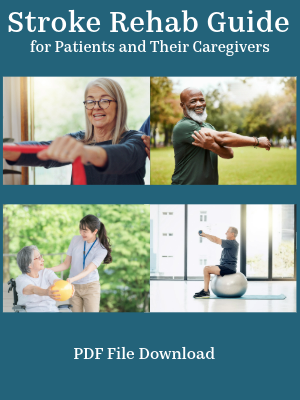Hyperlipidemia and High Cholesterol
Hyperlipidemia and high cholesterol are terms that mean there is an excess of fats or lipids in the bloodstream. Hyperlipidemia can refer to high cholesterol or high triglyceride levels. Cholesterol is part of a healthy body, but having too much of it in your blood can be a problem.
When you have excessive fats in the blood, this can increase your risk for atherosclerosis or hardening of the arteries with plaque. Plaque consists of lipids and other components from your blood. As plaque grows inside of your arteries, the arteries begin to narrow and become harder. This can lead to reduced blood flow through the arteries and increase the risk of stroke and heart attack.
How can I tell if I have hyperlipidemia and high cholesterol?

Unfortunately, there are no symptoms from having high lipid levels in your bloodstream. In order to find out if you have high cholesterol or triglycerides, you must have a blood test which will reveal these levels. The American Heart Association (AHA) recommends checking cholesterol levels once between the ages of 9-11 and once between the ages of 17-21 for those without risk factors or a family history of early heart disease. After age 20, it is recommended that cholesterol be checked every four to six years as long as your risk remains low.
The diagnosis of hyperlipidemia is usually made through a blood test called a lipid profile or lipid panel, which measures the levels of various lipids in the blood, including total cholesterol, LDL cholesterol (often referred to as "bad" cholesterol), HDL cholesterol (often referred to as "good" cholesterol), and triglycerides. If you have high lipid levels, then your physician may prescribe medicine or discuss lifestyle and diet changes with you. Some general U.S. guidelines regarding lipid levels from a blood test are as follows:
Total Cholesterol:
Desirable: Less than 200 mg/dL (5.2 mmol/L)
Borderline high: 200-239 mg/dL (5.2-6.2 mmol/L)
High: 240 mg/dL (6.2 mmol/L) and above
Total cholesterol level is a combination of low-density lipoprotein (LDL) cholesterol, high-density lipoprotein (HDL) cholesterol, and approximately 20% of the triglyceride level.
LDL Cholesterol:
Optimal: Less than 100 mg/dL (2.6 mmol/L)
Near or above optimal: 100-129 mg/dL (2.6-3.3 mmol/L)
Borderline high: 130-159 mg/dL (3.4-4.1 mmol/L)
High: 160-189 mg/dL (4.1-4.9 mmol/L)
Very high: 190 mg/dL (4.9 mmol/L) and above
LDL cholesterol is often referred to as "bad" cholesterol because it contributes to the formation of plaques in the arteries. The goal for LDL cholesterol levels varies depending on an individual's risk factors for cardiovascular disease.
HDL Cholesterol:
Low: Less than 40 mg/dL (1.0 mmol/L) in men and less than 50 mg/dL (1.3 mmol/L) in women
Higher levels are considered better, with an HDL level of 60 mg/dL (1.6 mmol/L) or higher being protective against heart disease.
HDL cholesterol is often referred to as "good" cholesterol because it helps remove LDL cholesterol from the bloodstream. Higher levels of HDL cholesterol are generally associated with a reduced risk of cardiovascular disease.
Triglycerides:
Normal: Less than 150 mg/dL (1.7 mmol/L)
Borderline high: 150-199 mg/dL (1.7-2.2 mmol/L)
High: 200-499 mg/dL (2.3-5.6 mmol/L)
Very high: 500 mg/dL (5.7 mmol/L) and above
Triglycerides are another type of fat in the bloodstream. Elevated triglyceride levels are associated with an increased risk of cardiovascular disease.
It is important to note that these are general guidelines, and individual target levels vary depending on a person's overall health, presence of other risk factors, and any underlying medical conditions. It is best to check with your MD on recommended levels for your situation as they may be different.
Hyperlipidemia and High Cholesterol Treatment
 |
Exercise and a healthy diet can help reduce fat levels in your blood. Sometimes medications are necessary. Some of the medications prescribed include statin drugs, fibrates, bile acid sequestrants, and niacin. |
Dietary recommendations for lowering cholesterol include reducing saturated fat to less than 7% of your daily calories, reducing total fat intake to 25-35% of daily calories, eating 20 to 30g of soluble fiber, and increasing intake of plant stanols or sterols which are found in nuts, corn, rice, and vegetable oil. Exercise can help lower lipid levels as well. It is recommended to get 30 minutes of exercise most days of the week.
Managing Hyperlidemia and High Cholesterol
In the U.S., the Therapeutic Lifestyle Changes, or TLC, Program is a three-part program created by the National Heart, Lung, and Blood Institute to improve cholesterol numbers. The TLC Program combines diet, physical activity, and weight management to help lower high blood cholesterol and improve heart health. The program’s step-by-step plan can lower LDL cholesterol and risks for heart disease and other serious conditions. Learn more at https://www.nhlbi.nih.gov/education/TLC-Therapeutic-Lifestyle-Changes-Lower-Cholesterol
Some other websites that provide helpful information on managing hyperlipidemia and high cholesterol are provided below:
American Heart Association:
https://www.heart.org/en/health-topics/cholesterol
British Heart Foundation:
https://www.bhf.org.uk/informationsupport/support/reducing-your-high-cholesterol
Heart and Stroke Foundation of Canada:
Get Our Stroke Rehab Guide

Our stroke rehab guide is designed specifically for patients and caregivers. It's in pdf format and can be immediately downloaded. It includes about
- Stroke Definition & Causes
- Stroke Treatment
- Rehabilitation Information for Physical, Occupational and Speech Therapy
- Exercise pictures
- Q&A from patients and caregivers
- Adaptive Equipment & Techniques
- How to Prevent Another Stroke & More!
- Home
- Types of Stroke
- Hyperlipidemia
Medical Disclaimer: All information on this website is for informational purposes only. This website does not provide medical advice or treatment. Always seek the advice of your physician or other healthcare provider before undertaking a new healthcare or exercise regimen. Never disregard professional medical advice or delay seeking medical treatment because of something you have read on this website. See the disclaimer page for full information.
- Home
- Types of Stroke
- Hyperlipidemia
















